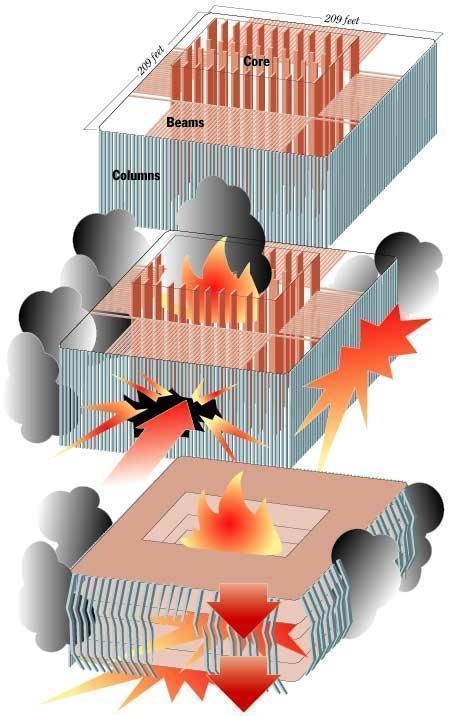How the buildings most likely collapsed
Attack on the World Trade Center | Attack on the Pentagon
Anatomy of terrorist attacks | How the buildings most likely collapsed
 Steel columns - spaced 3 feet, 3 inches apart - are connected by 60- and 35-foot beams to a core of about 50 support columns.
Steel columns - spaced 3 feet, 3 inches apart - are connected by 60- and 35-foot beams to a core of about 50 support columns.
1. The planes crash into the buildings, damaging or destroying many outer columns. Some interior columns are also damaged, but the buildings still stand.
2. Fire erupts and burns for an hour to an hour-and-a-half in the upper floors of the buildings.
3. Temperatures reach as high as 1600 F, weakening the steel columns until they can no longer support the building weight. Interior columns essentially melt and collapse, buckling the exterior columns.
4. Added weight of each collapsed floor causes a pancaking effect - called progressive collapse - and the buildings come down.
Sources: Skilling Ward Magnusson Barkshire; Port Authority of New York and New Jersey: Knight Ridder Newspapers; New York Times; The Associated Press
 |
| ALDO CHAN, MICHELE MCMULLEN, MARK NOWLIN, WHITNEY STENSRUD / THE SEATTLE TIMES |